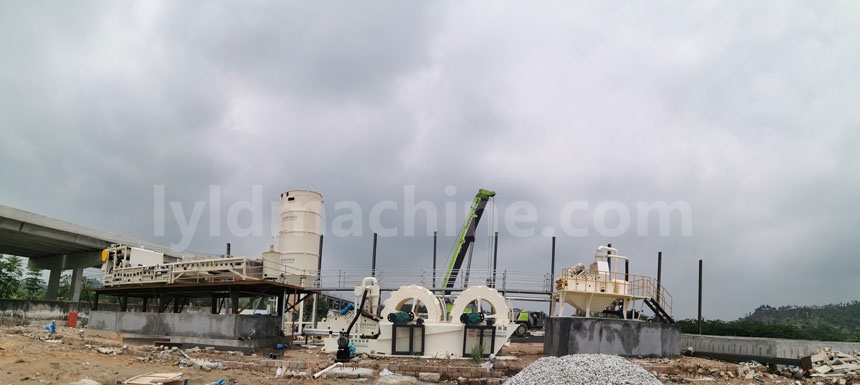
Menu
 LDHB Machines
LDHB Machines
The utilization rate of iron tailings as industrial waste is extremely low. By preparing cement-iron tailings gravel mixtures with different dosages, its applicability was studied using compressive strength, splitting strength, dry shrinkage performance and freeze-thaw splitting. The results show that iron tailings can be used as a pavement base material, and cement-stabilized gravel with a 25% iron tailings content can be used as a heavy-duty traffic base. Some tailings are mainly iron ore particles that cannot be used in the original beneficiation process, as well as impurities such as silicon and aluminum.

In recent years, with the massive development and utilization of mineral resources, a large amount of solid waste has been generated. Iron tailings are used as industrial waste, and the comprehensive utilization rate is less than 7%. , occupying a large amount of farmland and land, causing great trouble to local residents near the mine. Secondly, various provinces have successively launched the construction of four-good rural roads and tourist roads. The demand for stone materials in road projects continues to increase, leading to an increase in road construction costs year by year. As a secondary energy source, if iron tailings can be applied in the road field, it can not only effectively solve the shortage of sand and gravel materials, but also avoid a series of problems caused by large iron ore stockpiles, greatly reducing the cost of road construction. Reduce resource consumption. Wang Yujie’s research shows that grinding iron tailings into iron tailings powder for use in cement concrete can significantly improve the workability of concrete. Wang Hong substituted iron tailings for quartz sand to prepare reactive powder concrete and found that it has good mechanical properties. Li Zhuang’s research shows that iron tailings sand can be used in dense concrete, aerated concrete, ECC, and ultra-high performance concrete.